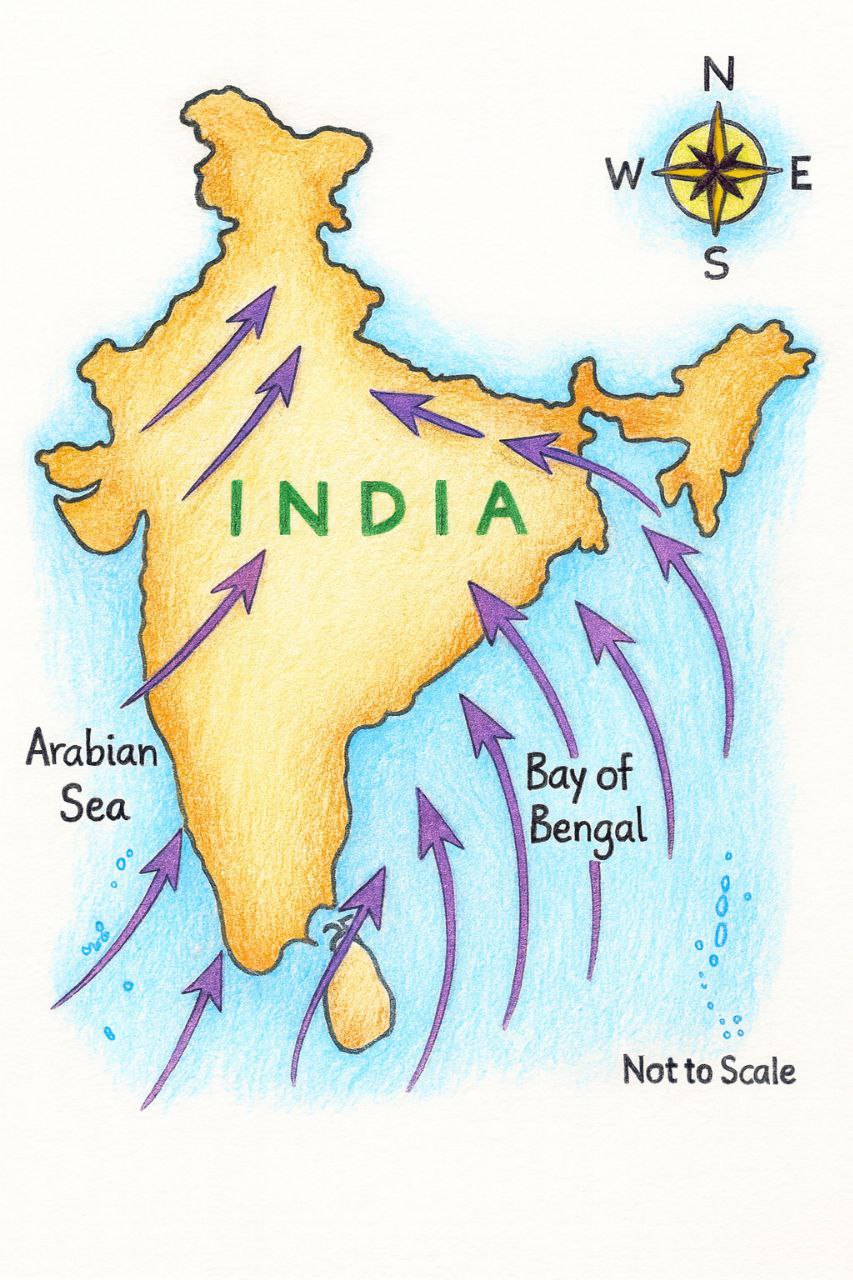Why is the South-West monsoon called ‘Purvaiya’ (easterly) in Bhojpur Region? How has this directional seasonal wind system influenced the cultural ethos of the region?
Why is the South-West monsoon called ‘Purvaiya’ (easterly) in Bhojpur Region? How has this directional seasonal wind system influenced the cultural ethos of the region?
The South-West monsoon, though generally westerly in origin, is locally referred to as ‘Purvaiya’ (easterly) in the Bhojpur region of Bihar and eastern Uttar Pradesh. This nomenclature is a reflection of local perception shaped by geography and wind direction relative to the region.
Why South-West Monsoon is Called 'Purvaiya' in Bhojpur Region
-
Relative Direction of Windflow:
- The South-West monsoon winds, after deflecting around the Bay of Bengal, move northwestwards into the middle Ganga plains.
- In Bhojpur, these winds arrive from the east/southeast direction, and thus are locally perceived as easterlies or Purvaiya.
-
Geographic Orientation:
- Bhojpur lies east of the Vindhyas and west of the Bay of Bengal. The wind, after travelling from the Bay, approaches from the east.
- Hence, villagers name it from their experiential geography, not its true origin.
-
Oral Traditions and Linguistic Custom:
- Local languages like Bhojpuri use cardinal directions in ways that reflect experiential association, not meteorological precision.
- The term ‘Purvaiya’ is embedded in folklore, songs, and idioms passed through generations.
Influence on Cultural Ethos of Bhojpur Region
-
Agricultural Festivals and Rhythms:
- The arrival of Purvaiya heralds kharif sowing, especially paddy cultivation.
- Festivals like Asadh and Sawan celebrate the joy of monsoon rains through folk songs and rituals.
-
Folk Songs and Music:
- Kajri and Birha songs often personify the Purvaiya as a messenger of longing and fertility.
- Example: Purvaiya bahar laage la, piya ke sandesh laage la – expressing love and seasonal change.
-
Architecture and Lifestyle:
- Traditional homes in the region have verandahs and sloping roofs, adapted to monsoon rains.
- Cultural practices like rainwater harvesting in ponds (ahars and pynes) evolved with the monsoon cycle.
-
Religious Significance:
- Chhath Puja, though post-monsoon, celebrates the sun and water—elements deeply tied to monsoon ecology.
- Monsoon-fed rivers like the Ganga are considered sacred lifelines.
-
Migration and Memory: During monsoon, Bhojpuri migrants often sing songs yearning for home, connecting climate and emotion.
The term Purvaiya reflects how geographical phenomena are internalized and named culturally. In Bhojpur, the South-West monsoon is not just a meteorological event but a life-structuring force—deeply embedded in its agriculture, folklore, and seasonal identity.
Answer Length
Model answers may exceed the word limit for better clarity and depth. Use them as a guide, but always frame your final answer within the exam’s prescribed limit.
In just 60 sec
Evaluate your handwritten answer
- Get detailed feedback
- Model Answer after evaluation
Model Answers by Subject
Crack UPSC with your
Personal AI Mentor
An AI-powered ecosystem to learn, practice, and evaluate with discipline

